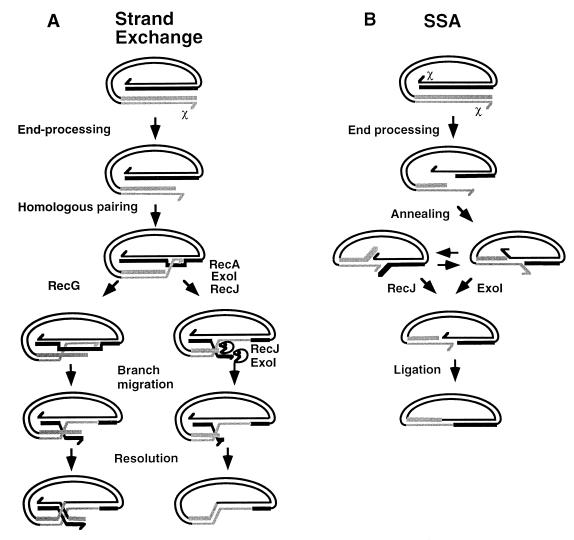FIG. 1.
Hypothetical RecG-dependent and independent branch migration mechanisms. Homologous sequences are designated by black (top) or gray (bottom) parallel lines. 3′-Ending strands of the homologous sequences are narrow and are marked by half arrowheads. 5′-Ending strands are wide. Thus, strands of homoduplex structures have different widths and the same color, and strands of heteroduplex structures have the same width but different colors. (A) After RecA-catalyzed strand invasion, RecG drives the three-stranded junction to a duplex-duplex region, where a Holliday junction is formed. 3′ and 5′ heteroduplexes are then extended by reciprocal strand exchange. In the absence of RecG, polar strand exchange may be catalyzed by RecA, in cooperation with RecJ or exonuclease I (ExoI) that degrades the displaced strands. Both modes of strand exchange depend also on endonucleolytic cleavage of the D-loop. The nonconservative reaction would yield a circular product with a 3′ heteroduplex. (B) A 3′ heteroduplex may be generated by SSA recombination. In this pathway both ends are processed to 3′ overhangs that anneal to a heteroduplex structure.

